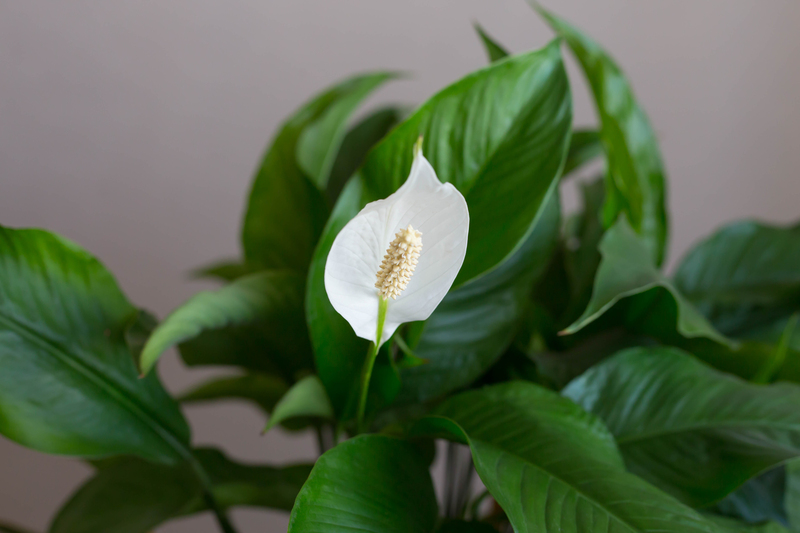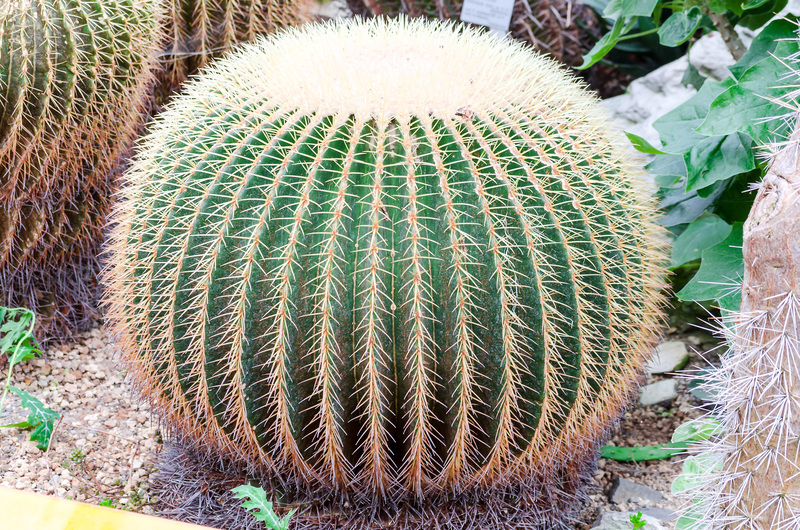Winterizing Your Garden: Keep Your Plants Safe
Posted on 13/06/2025
Winterizing Your Garden: Keep Your Plants Safe
Winter can be a challenging season for gardeners and their beloved plants. The falling temperatures, frost, heavy snow, and cold winds can wreak havoc on even the most meticulously maintained gardens. Winterizing your garden is essential to ensure the survival and health of your plants through harsh months. In this in-depth guide, we'll unveil the best practices for protecting your plants in winter, preparing your garden for cold weather, and ensuring a thriving return in the spring.
Why Is Winterizing Your Garden Important?
As the days grow shorter and the first frosts appear, your garden becomes vulnerable to several threats. Winterizing your garden aims to:
- Prevent plant damage from freezing temperatures
- Shield roots from soil heaving and ice crystals
- Protect saplings and perennials against desiccating winds
- Reduce pest and disease carryover into spring
- Encourage strong plant growth when temperatures rise
Neglecting winter preparation can lead to stunted growth, dead plants, and reduced yields in the following year. Cold weather gardening is not just about survival--it's about setting your landscape up for future success.

Assessing Your Garden's Winter Risks
Before diving into the nuts and bolts of winter garden protection, it's crucial to evaluate your unique garden environment:
- Determine your USDA hardiness zone: Understanding your local climate helps choose resilient plants and timing winter prep tasks.
- Observe microclimates: Areas near walls, fences, or under trees may require different care.
- Identify vulnerable plants: Tender perennials, young shrubs, tropicals, and container plants are typically most at risk.
This knowledge allows you to tailor your garden winter care strategy and maximize your efforts.
Step-by-Step Guide to Winterizing Your Garden
1. Clean Up and Remove Debris
A tidy garden is less likely to harbor diseases or pests.
- Remove dead annuals, spent vegetables, and fallen leaves.
- Cull infected or infested plant material to reduce overwintering of harmful organisms.
- Compost healthy garden waste, but avoid composting diseased plants.
Healthy beds provide a fresher start when spring arrives.
2. Prune Carefully
Proper pruning helps control disease and encourages robust growth.
- Prune dead, damaged, or diseased branches from trees and shrubs.
- Avoid heavy pruning of most woody plants in late fall, as it may stimulate new growth vulnerable to frost.
- For roses and some perennials, prune lightly to remove weak stems, but save major shaping for early spring.
3. Mulch for Insulation
Mulching is one of the most effective techniques for winterizing garden beds. Mulch acts as a blanket that:
- Reduces temperature fluctuations in the soil
- Prevents repeated freezing and thawing that can damage roots (also known as "frost heave")
- Conserves soil moisture during dry winter months
How to mulch for winter:
- Apply a 2-4 inch layer of organic mulch (shredded bark, straw, leaves) around perennials, shrubs, and trees, but keep it a few inches away from trunks and stems.
- Use evergreen boughs or pine needles for additional insulation, especially in colder climates.
4. Water Wisely Before the Freeze
Hydrated plants are more resistant to winter damage. Dry soil leads to plant desiccation during frosty spells. Before the ground freezes:
- Give trees, shrubs, and perennials one deep, thorough watering.
- Check containers and raised beds as they dry out more quickly than ground soil.
- After the ground freezes, discontinue watering until spring.
5. Protect Vulnerable Plants
Some plants--such as young saplings, marginally hardy perennials, and tender bulbs--need extra protection. Consider the following methods for plant winter protection:
- Frost blankets or garden fabric: Cover plants during cold snaps or frosty nights, removing coverings during the day to prevent mold.
- Burlap wraps: Surround evergreen shrubs and young trees to protect against wind scorch and ice damage.
- Cold frames and cloches: Use for overwintering seedlings or herbs in the vegetable garden.
- Upturned pots or homemade shelters: Ideal for insulating small, delicate plants during freezing conditions.
6. Move Potted and Tender Plants Indoors
Container plants are especially susceptible to winter kill as their roots are above ground and exposed to air temperatures.
- Move potted tropicals, citrus, succulents, or tender perennials indoors before the first frost.
- Place them in sunny windows or under grow lights. Reduce watering and withhold fertilizer to mimic their dormant period.
- For large containers that can't be moved, insulate pots with bubble wrap, burlap, or even bury them in the earth up to the rim.
7. Winterizing Garden Structures and Systems
Don't forget the infrastructure that keeps your garden thriving.
- Drain and store hoses, drip systems, and irrigation timers to avoid freeze damage.
- Clean, oil, and store gardening tools in a dry location.
- Empty rain barrels and other water storage devices.
- Check fences, trellises, and arbors for damage and repair as needed to withstand snow and ice loads.
The Best Plants for Winter Gardens
If you're looking to minimize winter risks, choose resilient species suited for your region's climate. Here are some winter-hardy favorites:
- Conifers (pines, spruces, junipers): Provide year-round greenery and structure
- Winter interest shrubs (red twig dogwood, witch hazel, holly): Colorful stems or berries to brighten bleak months
- Perennials (sedum, ornamental grasses, hellebores): Add texture and persist through months of cold
- Groundcovers (vinca, pachysandra, ajuga): Reduce soil exposure and suppress winter weeds
Planning your garden around winter-hardy plants increases your success and reduces your workload during the winterizing process.
Common Winter Hazards and How to Avoid Them
Frost and Freeze Damage
Sudden temperature drops can cause water within plant cells to freeze and rupture, leading to blackened foliage and stunted blooms in spring.
- Cover vulnerable plants at dusk with cloth, burlap, or frost blankets; remove covers in the morning.
- Water deeply before expected cold nights since moist soil holds more heat than dry soil.
Winter Desiccation (Drying Out)
Dry winds, sudden temperature changes, and frozen ground prevent water uptake, causing leaves, especially on evergreens, to brown or curl.
- Mulch roots thoroughly and water well before the freeze.
- Shield evergreens from wind using burlap barriers.
Soil Heaving
Repeated freezing/thawing causes soil to expand and contract, pushing shallow-rooted plants out of the ground.
- Apply a thick layer of mulch to insulate and stabilize temperature swings.
- Gently press any heaved plants into the ground on mild days and add more mulch if necessary.
Snow and Ice Loads
Heavy snow and ice can snap branches and crush delicate shrubs.
- Brush off snow gently with a broom after each storm (never shake frozen limbs, as they may break).
- Tie up columnar evergreens or wrap with twine for structural support.
Frequently Asked Questions about Garden Winterization
When should I start winterizing my garden?
Begin winter garden prep after the first hard frost but before the ground fully freezes. In most regions, this is mid to late autumn.
Should I fertilize plants before winter?
Avoid fertilizing in late fall, as nutrients can promote new, tender growth prone to frost damage. Instead, fertilize in early fall or wait until spring.
Can I start seeds indoors in winter?
Yes, starting seeds indoors for early crops is a great winter gardening project. Use seed trays and grow lights to get a jump start for the spring season.

Bonus Tips for a Beautiful Winter Garden
- Add winter containers: Plant evergreen boughs, branches with berries, and decorative twigs in empty pots for seasonal interest near entries or patios.
- Install bird feeders and water baths: Attract birds for winter garden activity and natural pest control.
- Plan for next year: Dream up new garden designs, browse catalogs, and order seeds while your garden sleeps.
Conclusion: Enjoy Your Garden All Year Round
Winterizing your garden doesn't have to be overwhelming. With a bit of planning and these proven techniques for protecting your plants in winter, you can rest easy knowing your landscape is safe from the cold. Whether you garden for beauty, vegetables, or relaxation, these winter garden protection tips will keep your plants thriving and ready for a new season of growth.
Ready to keep your plants safe this winter? Apply these strategies, and watch your garden come back stronger than ever in the spring! Looking for more cold weather gardening tips? Explore our related articles or sign up for our seasonal newsletter for expert advice all year long.
- Essential Fall Garden Prep Checklist
- The 10 Best Cold Hardy Plants
- Creative Winter Garden Layout Ideas
Stay warm and keep growing!



